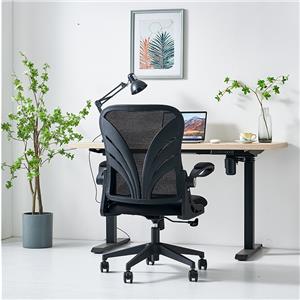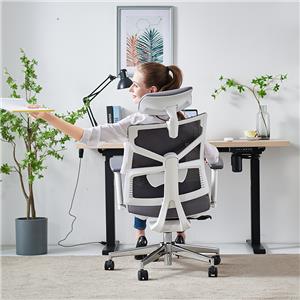What makes a good office chair?
At present, office chairs are becoming more and more important in office furniture. Why? Because more and more people pay attention to the health of office members and office efficiency, good office chairs can correct employees' body shapes and adopt a sitting posture for work. With the advancement of technology, sitting posture will also become an important factor for future workers. Way of working. Therefore, office furniture office chair design and related sitting posture analysis have increasingly attracted the attention and research of ergonomics researchers and designers.
1. Research on office chairs:
Different sitting postures, the pressure in the human intervertebral disc and the load on the muscles are a pair of contradictions. When sitting with the waist straight, the body maintains an "S" shape, the spine maintains the most natural posture when the human body is standing, and the pressure in the intervertebral disc is small. However, due to the limitations of the "h" shape of the seat, people's muscle load increases. When you sit bent over, although the load on the muscles is reduced, it also increases the internal pressure on the intervertebral disc. This sitting posture will naturally bend the spine, increase the burden on the legs, waist, and buttocks, and cause back pain after sitting for a long time.
2. The emergence of modern kneeling seats:
The "BALANS" series of chairs designed by Norwegian designer Peter Obswick from an ergonomic perspective in 1977 broke the traditional sitting posture of humans for thousands of years, combining "sitting on the floor" and "sitting with one's feet" The sitting posture was integrated into one body, marking the beginning of the modern kneeling seat.
When sitting in a kneeling position, the human trunk leans forward slightly, and the spine is closest to the natural state of the human spine when standing, thus effectively preventing spinal curvature. And because the body weight is evenly distributed on the buttocks, thighs and knees, the blood circulation and nerve tissue are not overly stressed, which helps to improve the body's blood circulation and breathing.
However, kneeling seats fall short in terms of variability. When users work on a kneeling chair, they always maintain a forward leaning posture, and it is difficult to change the sitting posture for rest. Long-term use will also cause muscle fatigue of the user.
3. Ergonomics principles - changing sitting posture:
Research shows that when we use a chair, due to physiological and psychological characteristics, the human body will have a perception of comfort. As the duration of the sitting posture increases, the human perception also changes, and fatigue perception gradually occurs. By judging and reacting to this individual subjective state, the human body will automatically and unconsciously adjust the sitting posture to reduce physical fatigue.
Simply put, even sitting in a very comfortable office chair can cause muscle fatigue over a period of time. Therefore, the design of the seat must make it possible for people to frequently change their posture and position in order to reduce muscle pressure.
4. New office chairs that can change your sitting posture:
Through the study of sitting posture, the design of office chairs can break through tradition. After my own research and obtaining a national utility model patent, a new form of office chair appeared - an office chair that can change the sitting posture. When people sit on it, they can easily change the human body's sitting posture into three states: the use state of an ordinary office chair, the use state of a kneeling chair and the use state of a reclining chair. The change of sitting posture is conducive to minimizing the discomfort symptoms such as waist pain, neck and back fatigue caused by office workers working for a long time. This new type of office chair is especially suitable for workers who work long hours in front of the computer.




